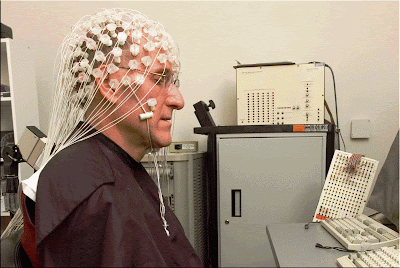This Is Your Brain on Meditation
By Shannon Stockwell
Meditation is having its heyday in the Western world these days. Many people, from sports figures (Seattle Seahawks coach Pete Carroll) to CEOs (Oprah Winfrey), espouse the benefits of taking a few moments out of each day to breathe, be still, and be in the moment. There are several reasons why people turn to meditation. In fact, mindfulness—the practice of being aware of one’s self and surroundings—has so many supposed benefits, it might seem at first glance to be nothing more than a pseudoscientific fad. But researchers around the world have been studying meditation using scientific methods and have made some surprising and convincing discoveries about its effectiveness, particularly the way that it can cause physical changes in the human brain.
In 2003, a group of scientists led by University of Wisconsin–Madison psychologist Richard J. Davidson performed a study on a group of 25 people who took part in an eight-week mindfulness course. Their brain activity was measured before and after the course. The 25 participants were compared to a control group which was measured at the same times. The scientists discovered that the meditators had significant increases in a process called “left-sided anterior activation,” which is associated with an increase in positive emotions. This may be why meditation is such an effective treatment for mental illnesses that are marked by a decrease in positive emotions.
Meditators have also claimed that their mindfulness practice has contributed to lower levels of stress. A 2013 study done by researchers in Pennsylvania found that the amygdala (two almond-shaped groups of nuclei located in the inner part of both hemispheres of the brain) shrinks in the brains of meditators. When faced with a stressful situation, the amygdala sends messages to the body, instructing it to release hormones (such as adrenaline) that cause the “fight or flight” response. It may be that the more robust the amygdala is, the more powerful the response. In meditators, however, the amygdala tends to be smaller, which might mean that they are better able to allow the more rational parts of their brains to control their responses to stressful situations, allowing meditators to remain calm under pressure.
Also investigating the connection between meditation and serenity, a group of researchers led by UCLA neuroscientist Dr. Eileen Luders studied the brains of a group of 44 meditators. Luders and her researchers discovered greater amounts of gray matter in the right orbital-frontal cortex and the right hippocampus. Both of these regions are associated with emotional regulation and response control, offering a physical explanation for why meditation helps practitioners to remain calm and positive.
Meditation, therefore, seems to have a positive effect on mental health. Why can't we know for certain? Because, when all is said and done, we still don’t quite understand exactly how the brain works. But maybe the connection between meditation and the brain can provide a clue.
 |
| Monk Barry Kerzin meditating with an electroencephalogram for neuroscience research. Photo by Antoine Lutz. Courtesy Wikimedia Commons. |
Meditators have also claimed that their mindfulness practice has contributed to lower levels of stress. A 2013 study done by researchers in Pennsylvania found that the amygdala (two almond-shaped groups of nuclei located in the inner part of both hemispheres of the brain) shrinks in the brains of meditators. When faced with a stressful situation, the amygdala sends messages to the body, instructing it to release hormones (such as adrenaline) that cause the “fight or flight” response. It may be that the more robust the amygdala is, the more powerful the response. In meditators, however, the amygdala tends to be smaller, which might mean that they are better able to allow the more rational parts of their brains to control their responses to stressful situations, allowing meditators to remain calm under pressure.
Also investigating the connection between meditation and serenity, a group of researchers led by UCLA neuroscientist Dr. Eileen Luders studied the brains of a group of 44 meditators. Luders and her researchers discovered greater amounts of gray matter in the right orbital-frontal cortex and the right hippocampus. Both of these regions are associated with emotional regulation and response control, offering a physical explanation for why meditation helps practitioners to remain calm and positive.
Meditation, therefore, seems to have a positive effect on mental health. Why can't we know for certain? Because, when all is said and done, we still don’t quite understand exactly how the brain works. But maybe the connection between meditation and the brain can provide a clue.
Small Mouth Sounds runs until December 10 at A.C.T.’s Strand Theater, 1127 Market Street. Click here to purchase tickets through our website. Want to learn more about the neuroscience of mindfulness and the production? Order a copy of Words on Plays, A.C.T.'s in-depth performance guide series.

